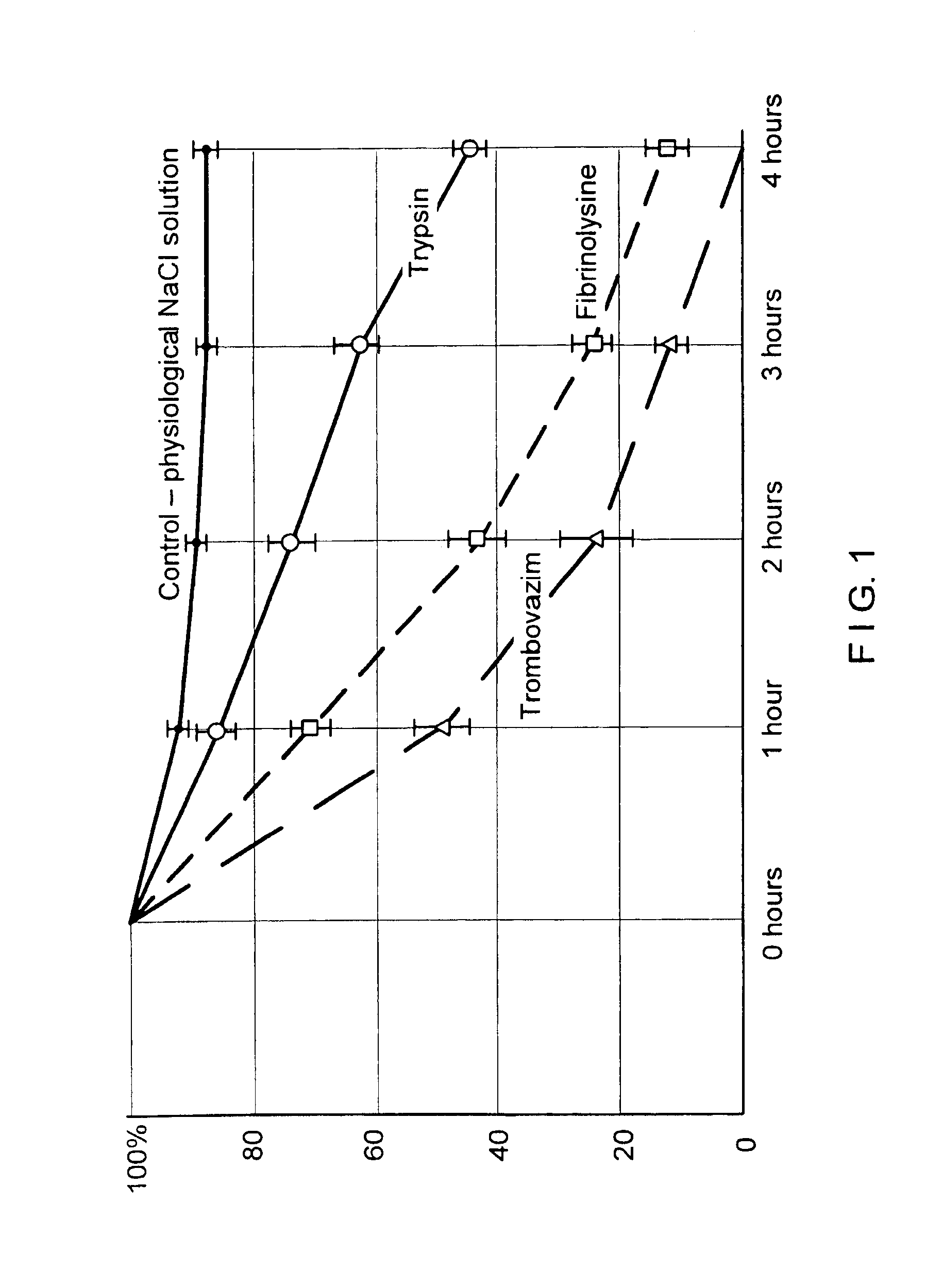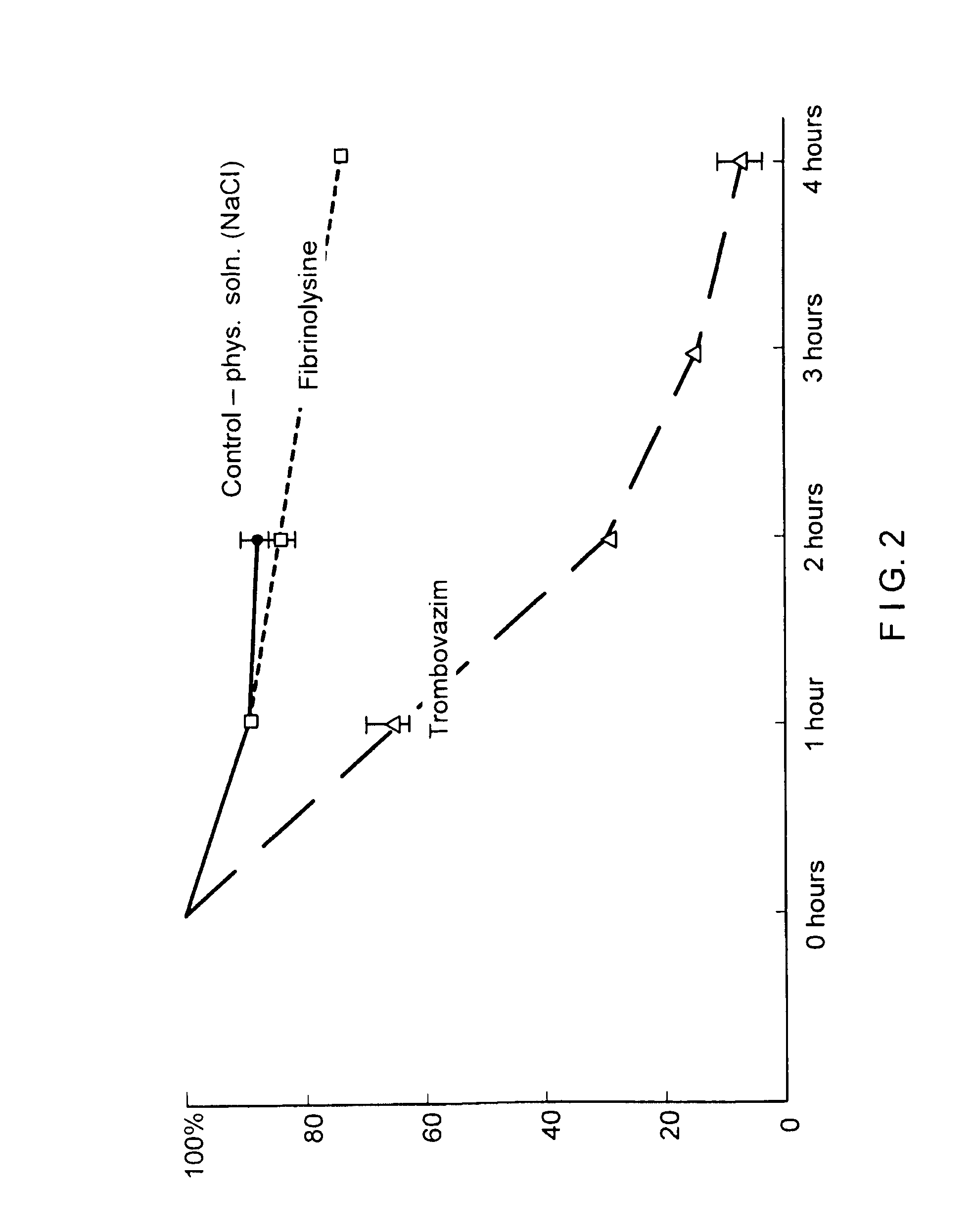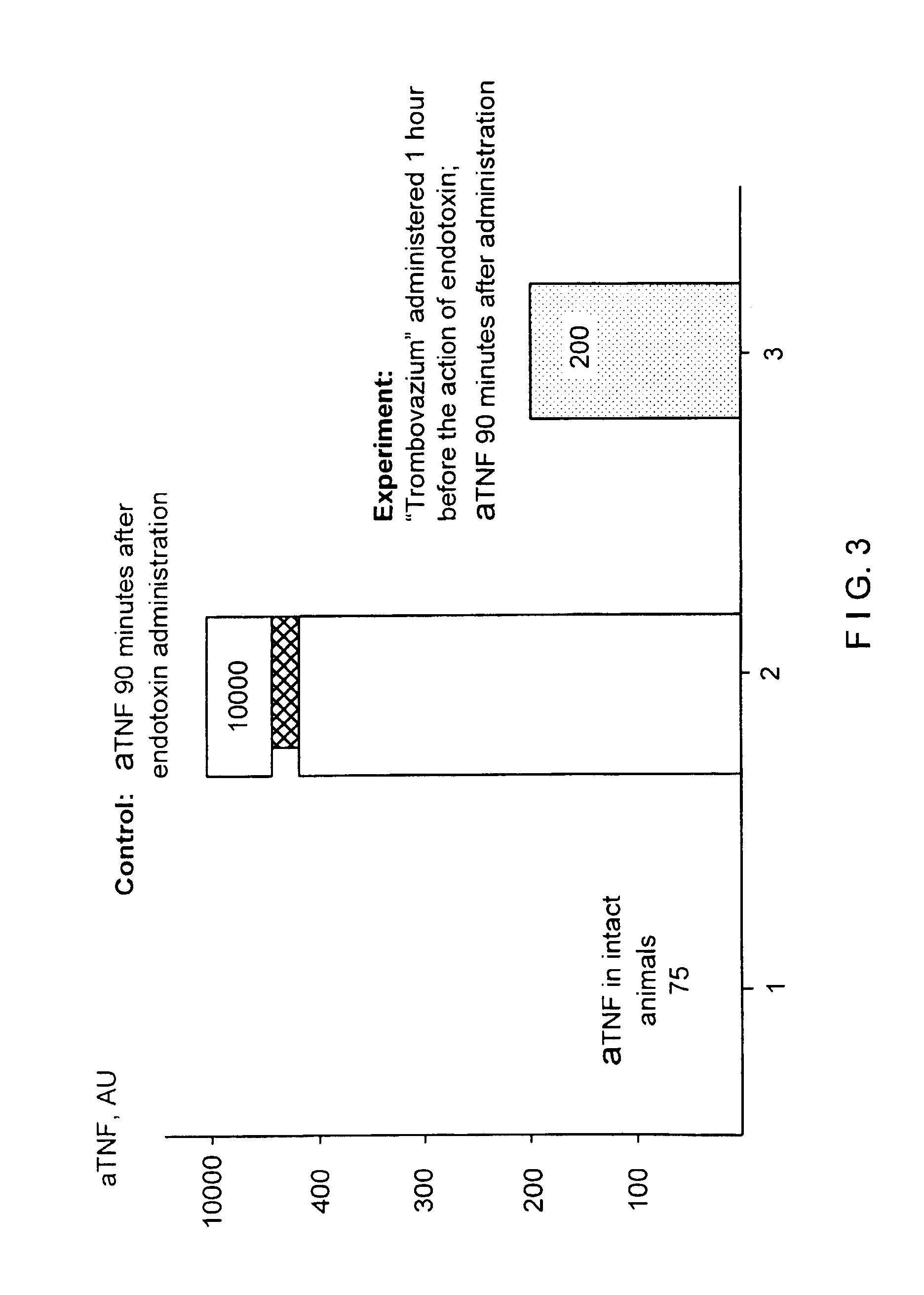Therapeutic composition containing a plurality of immobilized proteases
a technology of immobilized proteases and therapeutic compositions, applied in the field of medicine, can solve the problems of lysis of intravascular thrombosis, inability to control and dangerous hemorrhage, and destruction of bronchial obstruction, and achieve the effect of preventing and treating bronchial obstruction
- Summary
- Abstract
- Description
- Claims
- Application Information
AI Technical Summary
Benefits of technology
Problems solved by technology
Method used
Image
Examples
example 1
[0035]The proposed pharmaceutical composition is prepared in the following manner:
[0036]a reaction mixture is prepared by dissolving protosubtilin, predominantly protosubtilin G3Kh and polyethylene oxide (PEO) having a molecular weight of 400-20000 Da (predominantly 1500 Da) in a solution of dextran having a molecular weight of 40-70 kDa (predominantly 40 kDa) in a 0.025 M sodium phosphate buffer solution with pH 7.5-8.2. The obtained mixture is purified by removing ballast proteins by salt precipitation and subsequent filtration. The resulting solution is subjected to irradiation with gamma-rays or a stream of accelerated electrons (with energy of 2.0 MeV) in a dose of 0.5-1.5 Mrad. The solution after irradiation is subjected to sterilizing filtration and packaged in 10 ml batches into 15 ml vials. Then the solution is lyophilized to a residual moisture content not exceeding 2%.
[0037]As a result, a composition is obtained, containing a protease complex from Bac. subtilis, immobiliz...
example 2
[0039]The claimed composition can be prepared by another method, namely, by preparing separately an active component (component (1)) which contains a complex of proteases immobilized on polyethylene oxide and dextran, and a solvent which is a solution of polyethylene oxide (component (2)). The two-component formulation of the composition makes it possible to vary the activity of the claimed pharmaceutical composition by varying the active component / solvent ratio, so that individual schemes of treating can be selected. The two-component composition is prepared in the following manner:
Component (1) (Active Substance)
[0040]The reaction mixture is prepared by dissolving protosubtilin (predominantly protosubtilin G3Kh) and polyethylene oxide (PEO) having a molecular weight of 400-20000 Da (predominantly 1500 Da) in a solution of dextran having a molecular weight of 70-40 kDa (predominantly 40 kDa) in a 0.025 M sodium phosphate buffer solution with pH 7.5-8.2. The obtained mixture is puri...
example 3
[0046]15 of polyethylene oxide PEO-1500 are dissolved in 300 ml of a 10% solution of dextran having a molecular weight of 40 kDa in a 0.025 M sodium phosphate buffer with pH 7.5, 6.3 g of protosubtilin G3Kh are added, the mixture is stirred at a temperature of 18-20° C. for 30 minutes. Then ballast proteins are precipitated by salt precipitation techniques. For this to be done, added to the mixture in succession till complete dissolution are 1.3 g of sodium phosphate disubstituted to final concentration of 0.45% and 1.9 g of calcium chloride to final concentration of 0.63%. After the dissolution of calcium chloride an insoluble precipitate of calcium phosphate is formed in the reaction mixture, and this calcium phosphate adsorbs the ballast proteins. The mixture is maintained for 12 hours at a temperature of 4 to 8° C. for complete precipitation of the ballast proteins. After that the reaction mixture is filtered through paper filters (“white ribbon”). The volume of the filtrate is ...
PUM
| Property | Measurement | Unit |
|---|---|---|
| molecular weight | aaaaa | aaaaa |
| molecular weight | aaaaa | aaaaa |
| molecular weight | aaaaa | aaaaa |
Abstract
Description
Claims
Application Information
 Login to View More
Login to View More - R&D
- Intellectual Property
- Life Sciences
- Materials
- Tech Scout
- Unparalleled Data Quality
- Higher Quality Content
- 60% Fewer Hallucinations
Browse by: Latest US Patents, China's latest patents, Technical Efficacy Thesaurus, Application Domain, Technology Topic, Popular Technical Reports.
© 2025 PatSnap. All rights reserved.Legal|Privacy policy|Modern Slavery Act Transparency Statement|Sitemap|About US| Contact US: help@patsnap.com



